Research and Development Support
Corporate Value Creation
Japanese Originality as Global Values
In the late 1990s, the environment and safety were the two major aims of technology development competitiveness. Toyota introduced hybrid vehicles in the environmental field and introduced GOA in the safety field, moving Toyota into a world-leading position. At this time, the need to search for the next foundation of competitiveness was discussed in the Engineering Division, and in 2000, the Develop the Next Theme (DNT) Team was established in the Technical Administration Division.
The DNT Team, acting in accordance with the Five Main Principles of Toyoda, which state "be ahead of the times through endless creativity, inquisitiveness and pursuit of improvement," organized the ideas that Toyota must place greater importance on creativity and the originality that it gives rise to as well as perspectives rooted in Japan, the site of Toyota's origins, for exhibiting creativity and originality to distinguish Toyota from American and European automakers. The result was 'Japanese originality as a global value' ('Japanese originality'). Starting with Japan-the origin of Toyota and the birthplace many members of Toyota-and with the individuality and values of each individual, Toyota pursues individuality from the interaction of diverse cultures and values from around the world and the resonance (and at times discord) that they produce as core values. Five key concepts based on this foundation-optimization as the harmony of space, metamorphosis beyond the five senses, mastery of simplicity and beautification, magical duality, and a playful and aesthetic disposition-were derived from a survey on Japanese originality and its values conducted in 14 major cities in Asia, North America, and Europe.
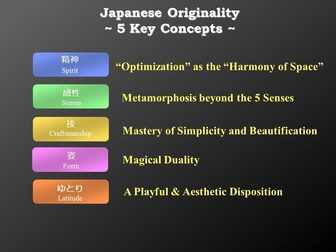
Five key concepts of Japanese creativity
'Japanese originality' was implemented in engineering divisions starting in 2002. Implementation included holding Japanese Originality Briefings and producing and distributing the Japanese Originality Guidebook (an English Version was prepared for overseas R&D bases). In 2003, Japanese Originality was presented to senior managers of sales and production companies from around the world at the Toyota World Convention and to members of the media at a New Design Building Briefing. As a derivative activity, the Action Y program was conducted from 2001 to 2003 to focus on people and dreams-the sources of creativity-in order to enhance the capabilities of engineering divisions from an emotional perspective.
'Japanese originality' was embodied in core messages beginning with the exhibition of the i-Swing concept car at motor shows and the exhibition of the i-Unit at the Expo 2005 Aichi. 'Japanese originality' was later positioned at the center of research and development and the development of corporate value discussed below.
-
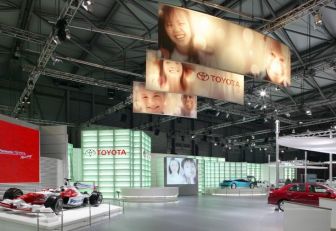
2003 Motor Show - Expressing global-strategy space
-
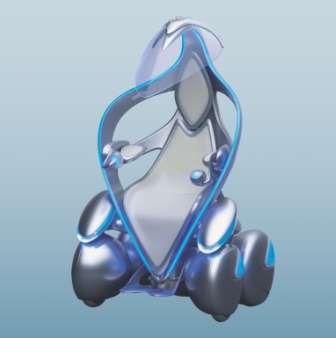
i-unit
Today for Tomorrow and Zeronize & Maximize Technology Philosophies
From the 1990s to the early 2000s, calls to respond to global issues such as the global environment and energy increased. At the same time, the size of engineering divisions increased, resulting in greater organizational division and complexity. The scope of work of each individual became increasingly narrow, causing significant disparity among organizations and individuals in the concept of "good cars, good technology" that had been shared among personnel in the technology divisions. It was under these circumstances that Toyota declared that it would make its engineering divisions "the world's most powerful development organizations capable of maximizing the creativity of each individual" and implemented a variety of measures to achieve this objective. Among those measures was an attempt to unify sentiments among engineering personnel by clarifying common foundations for product and technology development.
Specifically, Toyota adopted and distributed internally and externally action principles and a vision for Toyota engineering divisions that sought to achieve sustainable development, the primary objective of the World Business Council for Sustainable Development, of which Honorary Chairman Shoichiro Toyoda served as Vice Chairman, and sustainable mobility, an important element of sustainable development.
The action principles are defined as 'thinking about what needs to be done and doing now what needs to be done with foresight of the future for the benefit of customers and society' and has as its slogan, 'Today for Tomorrow'. The slogan of the vision is 'Zeronize & Maximize'. This is a statement of Toyota's commitment to make maximum efforts towards eliminating the negative aspects of motor vehicles, such as environmental impact and traffic accidents, and maximizing their positive aspects including the feel of rapid acceleration and the joy of driving. Toyota will strive to achieve a compatibility of these two contradictory objectives on an unprecedented level without compromise.
'Today for Tomorrow' and 'Zeronize & Maximize' were promoted at development bases in Japan and overseas through the speeches by senior managers of engineering divisions as well as a pamphlet entitled "Today for Tomorrow" (in Japanese and English versions). In addition, a variety of external publicity was conducted such as a speech at the Universal Forum of Cultures held in Barcelona, Spain in 2004.
So, Sei, Do, Ten, Wa as Directions of Corporate Value Building and New Relationships
In 2005, Toyota began a search for its ethics and brand values in a new era with the aim of building a corporate brand originating in Japan and adopted the following five directions as new corporate values for the coming era and positioned them as core concepts for building corporate value.
- So: Adequate Existence = 1/X
- Sei: Living Beautifully
- Do: Human-like Encounters
- Ten: Cherishing Transition
- Wa: Nurturing Family Love
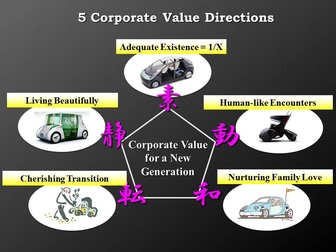
Five key directions in corporate value
Based on these of five directions and the five origins of Japanese creativity, Toyota sought to build new concepts of building corporate value by creating links among and leveraging monozukuri, kotozukuri, and hitozukuri.
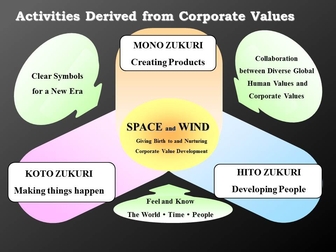
Five key directions in corporate value
Monozukuri (conscientious manufacturing) led to the proposal and the development of the 1/X, Rin, and i-REAL concept cars displayed at motor shows in 2007.
The i-REAL was developed for use as a show car at the Goodwood Festival, Shanghai Expo, and other events and was employed in a one-year trial at the Central Japan International Airport (Centrair).
Kotozukuri (making things happen) was disseminated as a corporate message through lectures and exhibits on Japanese originality conducted in engineering divisions, as well as through internal and external presentation of the "Predict and Show a New Tomorrow" corporate brand video, showroom exhibits, and through the main display of the Goodwood Festival. In addition, research bases were opened in Chicago, Bangkok, and Bilbao and Bucharest, and research activities to "feel and know the world, the times and people" were conducted, a search was made for new perspectives and concepts of Japanese creativity in a new era, and brainstorming was conducted internally and with overseas affiliates. Toyota held fashion, music, and culinary events, workshops, and FGI in collaboration with local artists to transform Toyota R&D engineer sites in Japan and overseas into places where new sensibilities can be discovered through these interactions with cutting-edge people from around the world.

Corporate image pictures
-
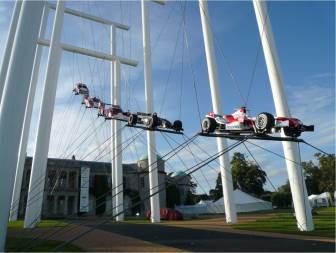
Goodwood main display (2007)
-
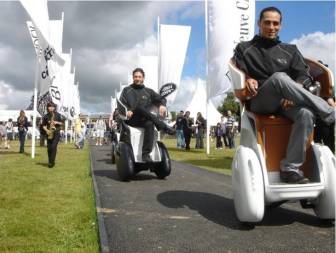
i-REAL in operation at the Goodwood Festival

For hitozukuri (developing people), Toyota holds lectures at universities and art museums around the world and activities at overseas research labs to build and expand a network of cutting-edge, talented personnel. Starting in August 2010, Toyota began accepting foreign trainees from Romania, Croatia, and Bangladesh.

Toyota also held the West Ghibli program in engineering divisions from April 2009 to August 2010 through its good relationships with Producer Toshio Suzuki and Director Hayao Miyazaki. Efforts were made to hone sensitivity, deepen understanding and facilitate the practice of Japanese originality by holding sensitivity training courses for engineers. These measures lead to a better-refined cycle of continuous enhancement of monozukuri (conscientious manufacturing).
-
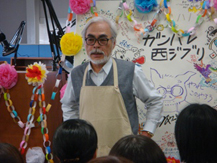
West Ghibli opening ceremony
-
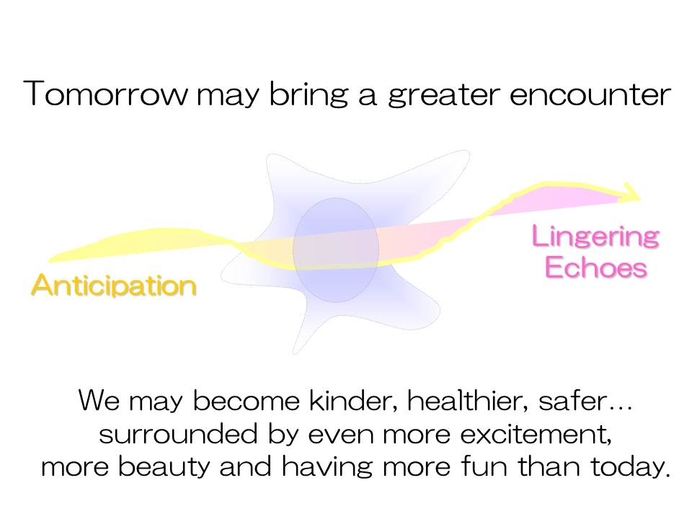
Conceptual diagram


